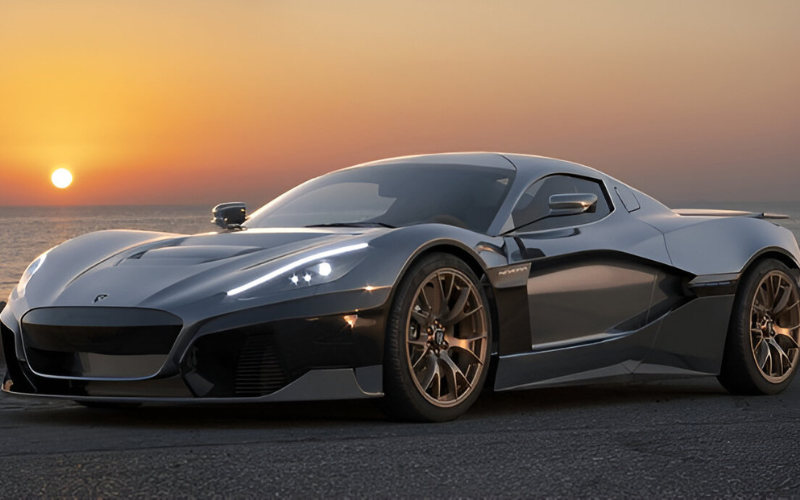Introduction
Electric cars aren’t just about going green — some of them are built to go really fast. In 2025, electric vehicles (EVs) are pushing the boundaries of speed and performance in ways we could only imagine a few years ago. This article explores which car holds the title of the fastest electric car in the world, what defines EV speed, and how this evolving technology is changing the game for car enthusiasts and manufacturers alike.
What Defines the Fastest Electric Car?
When we talk about the “fastest” electric car, it’s important to understand what that actually means. There’s more to speed than just one number on a speedometer.
Speed Metrics That Matter (Top Speed vs. Acceleration)
The two main factors that determine an EV’s speed are top speed and acceleration. Top speed refers to the highest velocity a car can reach, while acceleration is measured by how quickly a vehicle goes from 0 to 60 mph (or 0 to 100 km/h). In real-world driving, acceleration often matters more because it affects how a car handles traffic, merges onto highways, and performs in short bursts.
Testing Standards and Official Records
Speed claims are only valid when verified under standardized conditions. Organizations like the Guinness World Records, Nürburgring lap times, and independent performance tests help validate which EVs truly earn their titles. Some automakers conduct internal testing, while others invite third parties to measure and certify their vehicles’ performance.
2025’s Reigning Champion: The Fastest Electric Car Right Now
As of 2025, one electric car stands out from the rest as the undisputed speed king — the Rimac Nevera.
Key Specs and Performance Features
The Rimac Nevera has a top speed of 258 mph (412 km/h) and accelerates from 0 to 60 mph in just 1.85 seconds, making it the fastest electric car in the world today. This hypercar is powered by four independent electric motors, one for each wheel, delivering a combined output of over 1,900 horsepower. Its instant torque, advanced battery system, and track-tuned software make it a technological marvel.
Design Innovations That Enable High Speed
Beyond raw power, the Nevera’s aerodynamic design and lightweight carbon fiber body help it slice through air with minimal resistance. Active aero elements, like an adaptive rear spoiler and adjustable ride height, provide stability and grip at high speeds. These features work together to enhance both speed and safety, showing that design is just as crucial as engine power.
How It Compares to Other High-Performance EVs
The EV market is competitive, and many brands are racing to deliver the next big breakthrough in electric speed.
Rivals in the Race for Speed
Competitors like the Tesla Roadster (2nd Gen) and Lucid Air Sapphire offer jaw-dropping acceleration and futuristic performance, but they fall just short of the Nevera’s top speed. The Tesla Roadster, for example, promises a 0–60 mph time of 1.9 seconds and a projected top speed of over 250 mph — close, but still behind.
Performance vs. Practicality in Real-World Driving
While these electric speed machines are incredible on the track, their everyday use may be limited. High-performance EVs tend to have lower range, longer charge times, and less comfort for regular commutes. However, manufacturers are constantly working to balance performance, range, and daily usability, making ultra-fast EVs more accessible in the near future.
The Technology Behind Lightning-Fast EVs
Speed in electric cars isn’t just about powerful motors — it’s about how all components work together in harmony.
Battery Systems and Powertrain Advancements
One of the biggest challenges in high-speed EVs is battery management. Fast acceleration requires massive energy output, which can lead to overheating and degradation. Brands like Rimac and Tesla are using liquid-cooled battery packs, silicon carbide inverters, and advanced regenerative braking systems to improve efficiency and safety.
Lightweight Materials and Aerodynamics
Materials like carbon fiber, aluminum alloys, and titanium help keep the car’s weight low without sacrificing strength. Aerodynamics also play a key role — from streamlined body panels to underbody airflow systems, every design choice is engineered to reduce drag and increase downforce at high speeds.
The Future of High-Speed Electric Cars
As the EV market continues to evolve, new models and innovations are constantly on the horizon.
Upcoming Models Poised to Break Records
Several electric hypercars are in development with bold claims of beating the current top speed record. Names like the Aspark Owl, Lotus Evija, and even concepts from Bugatti-Rimac are aiming to redefine what’s possible. These future models will combine even more powerful drivetrains with cutting-edge AI driving systems and possibly solid-state batteries.
Challenges in Pushing EV Speed Further
Despite rapid progress, there are still limitations. Heat management, battery lifespan, safety regulations, and real-world efficiency are major hurdles. Plus, the faster a car goes, the more drag it faces — meaning even small increases in top speed require significant engineering breakthroughs. The path forward will rely on sustainable innovation that blends power with safety, efficiency, and environmental responsibility.
Conclusion
Electric vehicles have officially entered the era of extreme performance. The fastest electric car in the world proves that sustainability and speed can go hand in hand. With new technologies emerging and more manufacturers entering the race, the future of high-speed EVs is not just thrilling — it’s inevitable. As we move forward, expect even faster, smarter, and more efficient electric cars to continue breaking records and changing minds.
FAQ
Q1: What is currently the fastest electric car in the world?
The Rimac Nevera is currently the fastest electric car, reaching speeds of up to 258 mph.
Q2: How fast can electric cars go compared to gas-powered supercars?
Top electric cars like the Rimac Nevera and Tesla Roadster match or exceed the speeds of traditional gas-powered supercars thanks to instant torque and advanced tech.
Q3: Are the fastest EVs street legal?
Yes, many of them, including the Rimac Nevera and Lucid Air Sapphire, are street legal, though they are produced in limited quantities.
Q4: Which country is leading in electric car speed technology?
Croatia (home to Rimac), the U.S. (Tesla, Lucid), and Germany (Porsche) are at the forefront of developing high-speed electric vehicles.

